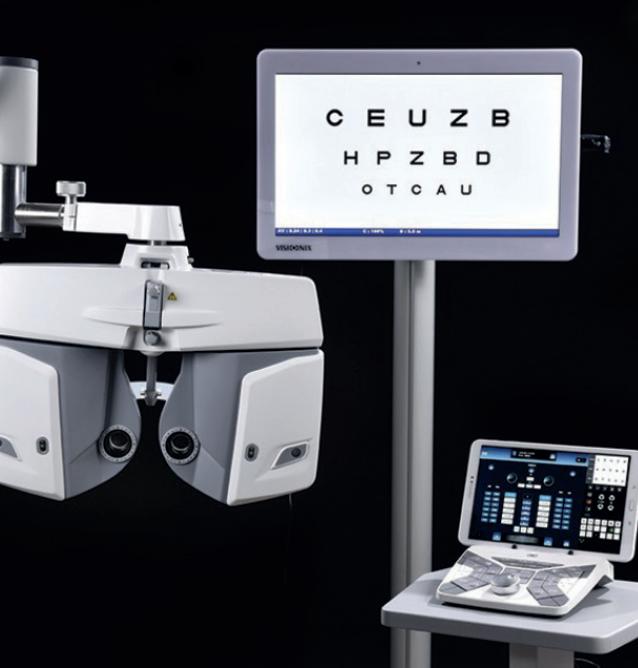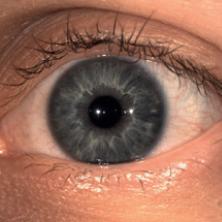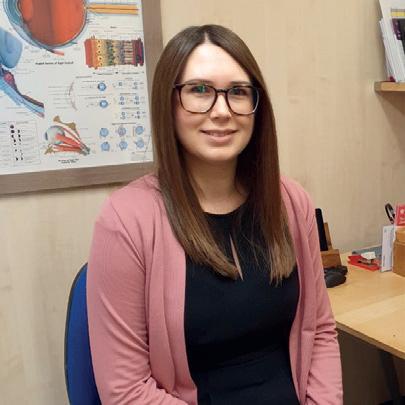
8 minute read
PATIENTS REMOVED FROM REPORTED WAITING LIST
from OT April/May 2023
by TheAOP
NHS England has confirmed that 323 patients have been placed on active monitoring following the roll out of new waiting list management guidance
There are concerns that patients will be lost in the system following the implementation of new guidance for managing waiting lists by NHS England.
Advertisement
The guidance, which was published at the end of October, permits clinicians to remove patients from the NHS elective waiting list after they have declined two offers of treatment and place patients on ‘active monitoring.’
In response to a Freedom of Information (FOI) Act request by OT, NHS England confirmed that 323 patients were placed on active monitoring between October 2022 and the end of January 2023.
Speaking to OT when the guidance was first published, a spokesperson for the Royal College of Surgeons highlighted that while the guidance seemed sensible at face value, how it is executed would be key.
Seven of the providers placing patients on active monitoring were NHS trusts, while the remaining 20 were independent hospitals.
The Royal College of Surgeons shared: “Used responsibly, these new guidelines could give us a more streamlined picture of patients waiting for treatment, and patients a more realistic idea of how long their waits might be. Used poorly, it could see patients lost in the system, or banished to waiting list purgatory.”
A hidden waiting list?
Waiting list consultant, Rob Findlay, of data and elective pathway management company Insource, highlighted the importance of a clinical decision being made when patients are placed on active monitoring.
Advertising:
Matt Hall 020 3771 7257 matt.hall@thinkpublishing.co.uk
Advertising production: aop@ccmediagroup.co.uk
Art director: Grant Pearce
Senior designer: Juanita Adu
Associate director: Anna Vassallo
Executive director: Jackie Scully
Published bimonthly for the Association of Optometrists by Think Media Group 20 Mortimer Street, London, W1T 3JW
Printed by Acorn Web, Normanton Ind Estate, Loscoe Close,
“NHS trusts and clinicians will need to ensure that patients do not feel bullied into moving off the waiting list, and into active monitoring,” the spokesperson highlighted.

“NHS England will also need to ensure that trusts are not tempted to use the guidance to game waiting lists, making them appear shorter than they are in reality,” the spokesperson emphasised.
Concerns were also expressed about the practicalities of implementing the new guidance.
The Royal College of Surgeons stated: “It may be wholly appropriate that a patient is moved to active monitoring, if they agree with that approach. But, will NHS systems be able to cope with moving patients on and off waiting lists?”
At the end of January, only 27 out of 533 NHS providers had placed patients on active monitoring.
“If clinicians are making clinical decisions that are in the best interests of the patient, then there is no problem,” he said.
However, he expressed concern that clinicians could come under pressure to remove patients from the waiting list, or that administrators rather than clinical staff could have responsibility for the decision.
In its response to OT’s FOI request, NHS England highlighted that patients were placed on active monitoring following a “clinical conversation that has determined it is clinically appropriate for a patient to choose to delay their treatment.”
Insource colleague, Karen Hyde, questioned the degree of patient choice that is present within the new guidance – for example, if a patient is repeatedly offered an appointment in a location that they cannot get to.
“Ophthalmology contains quite a lot of elderly patients. They may not have transport or someone to take them to another area,” she shared.
A frequently asked questions document seen by OT did not provide specific parameters for what would be considered a reasonable location for an appointment.
“A reasonable offer will be determined by each region based on the geography of the region,” the document stated.
Hyde shared her concern that patients would be lost in a “hidden waiting list” as a result of the guidance.
“I always think about mums and aunties, grandads and best friends. These are patients – this should not be about making waiting lists look more palatable,” she said.
Lessons from Scotland Findlay suggests that NHS England should look to Scotland for an example of the risks of creating exceptions to the reported waiting list.
In Scotland, there was a large increase in the use of social unavailability codes between 2008 and 2011. Social unavailability codes can be used when a patient is unavailable for treatment and are not included in the patient’s overall waiting time.
An Audit Scotland report in 2013 found that the use of this code increased from 11% to 31% over the four-year period.
The report concluded that the focus on waiting time targets led to insufficient scrutiny of how these targets were being achieved.
The proportion of patients coded as socially unavailable was higher in specialties with high patient numbers and pressure on capacity, such as ophthalmology and orthopaedics.
For example, in 2011, 40% of patients on the waiting list for ophthalmology outpatient treatment at Southern

#SightWontWait
Find out more about the AOP’s #SightWontWait campaign that has gained national media coverage: www.aop.org.uk/ sightwontwait
General Hospital in Scotland were coded as unavailable.
Audit Scotland also found limits on the choice that patients had when offered alternative appointments.
“We found little evidence to suggest that NHS boards are taking account of patients’ individual circumstances, such as access to transport, mobility or additional support needs, before offering them treatment at a location outside the board area,” the report highlighted.
Dr Peter Hampson, AOP clinical and professional director, shared that the guidance may appear to be a pragmatic solution on the surface.
“But the difficulty here is that once recategorised these patients may fall off the radar and as a result would not receive the care and treatment they require. We’re already seeing thousands of people experience delays to treatment due to the backlog in hospital eye care and there is a very real concern that this new approach allows even more patients to fall through the cracks. Given that ophthalmology patients are often elderly and the reasons they cannot attend may be practical and even financial it’s essential that trusts exercise prudence,” he said.
Ryan Leighton, CEO of Leightons Opticians and Hearing Care, reflected on the history of the company as it celebrates 95 years in 2023. The business opened as a dispensing practice in Southampton in 1928 and has grown into a clinically led optometry group, in its third generation as a family business.
41,000

Approximately 41,000 visually impaired people under the age of 25 are “at risk of inequitable education leading to reduced employment opportunities,” the Royal National Institute of Blind People (RNIB) has said, warning of a “worrying” attainment gap between visually impaired (VI) children and their fully sighted peers. RNIB research found that three quarters of local authorities in England have cut or frozen VI education service budgets at least once in the last four years, while there has also been a 10% increase in the number of children recorded as having vision impairments in these authorities.
Stepper Eyewear has launched a new logo and strapline focusing on ‘The Perfect Fit’ as part of a brand refocus. Peter Reeve, managing director of Stepper UK Limited, said: “The first frames, designed in 1970 by Hans Stepper, were manufactured in a new material and process to provide an exceptional standard of fit. This motivation remains true today.”
Chancellor of the Exchequer, Jeremy Hunt, unveiled a Spring Budget with the theme of ‘education, employment, enterprise, everywhere,’ on Thursday 15 March. The Chancellor laid out measures that he said will help to ‘level up,’ decreasing economic inactivity and encourage investment. Plans included an overhaul of disability support to make it easier for those with disabilities who want to work to do so. OT set out the key points from the Budget and shared the reactions from charities in the eye care sector. Read more at: bit.ly/3FCtQFw.

“20 years of Nocturnal is special to me”
Specsavers has introduced myopia management products into its practices across the UK and Republic of Ireland. Practitioners and retail staff across the multiple have completed myopia management training and the national launch of myopia management includes a contact lens and a spectacle lens option for patients. Specsavers confirmed it has worked closely with CooperVision and Hoya to ensure staff are able to communicate effectively about the products.

10,000
Bird Eyewear will plant more than 10,000 trees in the next two years as part of its Bird Forest initiative. The brand is working closely with Devon County Council and The Devon Wildlife Trust as part of a wider innovation project, supporting Bird’s drive towards carbon zero. The Bird Forest is located across three main sites in Devon: Haytor, Pinhoe and Slapton.
Scott Brown, optometrist and clinical director of Scotlens, looked back on 20 years of the company’s Nocturnal orthokeratology product. In celebration of the milestone, the company has launched a new advert forming part of Scotlens’ ‘#nightlenses revolution,’ which seeks to utilise “easy to use and remember night lenses terminology” to increase public awareness.


SCIENCE & VISION
Research in JAMA explored the effect of low-concentration atropine eye drops on myopia incidence. The Chinese University of Hong Kong Eye Centre trial saw 474 nonmyopic children randomly assigned to apply 0.05% atropine, 0.01% atropine or placebo drops once nightly in both eyes over two years. It concluded that nightly use of 0.05% atropine drops resulted in a significantly lower incidence of myopia compared with the placebo.


University Valli Opticians, at the University of Huddersfield, is raising awareness of children’s eye health, particularly the early diagnosis and treatment of amblyopia, as part of a new study that will offer free vision screening for over 1000 primary school children in Kirklees. Read about the research at: bit.ly/3LKfiav
Professional Support
SpaMedica Chelmsford has received the Alzheimer’s Society’s ‘Working to Become Dementia Friendly’ award. Feedback from the charity highlighted how the facility, which provides NHS cataract surgery, YAG laser capsulotomy, and wet age-related macular degeneration treatment, worked closely with the charity and Chelmsford Dementia Friendly community. As an organisation SpaMedica has introduced a Dementia Action Plan across all 46 of its UK hospitals.

Researchers have restored vision in a mouse model of retinitis pigmentosa (RP) using a new form of CRISPR gene editing. Published in JournalofExperimental Medicine, research outlines how the gene editing system can be programmed to correct many different types of genetic mutation – irrespective of the location on the genome.


The Optometric Fees Negotiating Committee has said that its evidencebased bid for an increase to GOS fees and grants has been “disregarded” by NHS England. A 4.5% rise, which is below inflation, was imposed to GOS and pre-reg training grants, and a freeze to CPD grants was confirmed.

In Practice
The Macular Society’s Geraldine Hoad, on the news that Pegcetacoplan had received US Food and Drug Administration approval for the treatment of geographic atrophy secondary to AMD.
Optometrist, Shamina Asif, reflected on the significance of Ramadan 2023 and the ways practices can support their Muslim colleagues. Read Shamina’s insights on OT: bit.ly/3LpVU2x
Optometrist, Laura Leafe, talked to OT about the concerning photograph of her niece’s eye that led to an urgent appointment and referral. Find the full story on OT: bit.ly/3JAvZUn
Isha Saghir, pre-registration optometrist at Bennett & Batty, a Hakim Group independent practice in Liverpool, shared her journey so far for OT’s Pre-reg focus, including balancing work with study and successfully achieving all her required competencies for Visit 1. Read Isha‘s latest update on the OT website: bit.ly/4035OLD











